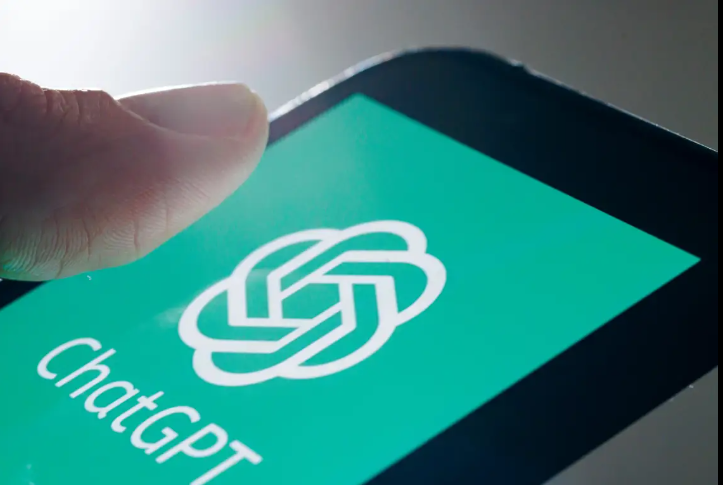In the changing digital world of 2024 the use of ChatGPT web scraping has become crucial for companies and developers seeking to extract data from the internet effectively. ChatGPT, an AI has expanded beyond just conversations to become a valuable tool for automating and improving web scraping tasks. This piece explores how ChatGPT can be utilized in web scraping providing a guide that includes fundamental principles as well, as expert advice and techniques.
What Is ChatGPT?
ChatGPT, a creation of OpenAI, is a language model that has garnered attention in different industries, such as web scraping. When it comes to web scraping ChatGPTs skill in comprehending analyzing and producing text akin to writing makes it a valuable asset, for streamlining the process of gathering information from websites. This segment will delve into how ChatGPTs features can be leveraged for data collection.

How to Use ChatGPT Web Scraping?
Using ChatGPT web scraping requires combining its AI features with scraping methods. This section of the manual will guide you on how to prepare ChatGPT web scraping, which involves teaching the AI to comprehend and carry out scraping operations while improving its results for real world applications.
Additionally we will discuss the process of extracting data from a website using ChatGPT highlighting the models skill in deciphering web layouts and accurately retrieving essential information.
Defining Your Objectives: Start by identifying the information you require. For example if your focus is on a shopping platform your goal could be to collect details such, as product names, prices and descriptions.
Setting Up ChatGPT: Make sure ChatGPT can communicate with your web scraping setup. This usually requires utilizing the OpenAI API alongside a web scraping tool such as Beautiful Soup, for Python.
import openai
import requests
from bs4 import BeautifulSoup
openai.api_key = 'your_openai_api_key_here'
Crafting Queries for ChatGPT: Please create a question for ChatGPT. If you need to extract a list of products you can request it to produce Python code that gathers information, about products from a given website.
Example Query to ChatGPT: “Write Python code to scrape product names, prices, and descriptions from ‘exampleecommerce.com/products’ using Beautiful Soup.”
Handling Data Extraction: Utilize the code produced by ChatGPT for carrying out the scraping task. Keep in mind that you may need to make tweaks to ChatGPTs results to align with your particular needs.
import requests
from bs4 import BeautifulSoup
url = 'https://exampleecommerce.com/products'
response = requests.get(url)
soup = BeautifulSoup(response.text, 'html.parser')
for product in soup.find_all('div', class_='product-item'):
name = product.find('h2').text
price = product.find('span', class_='price').text
description = product.find('p', class_='description').text
print(name, price, description)
Processing and Storing Data: Once you’ve extracted the data you may consider tidying it up or arranging it. ChatGPT is also able to assist in automating this task.
Example Request to ChatGPT: “Generate Python code to convert the scraped data into a CSV file.”
Overcoming Web Scraping Challenge: Struggling with challenges such as content? Just reach out to ChatGPT, for guidance on writing code that can manage JavaScript driven pages with Selenium.
from selenium import webdriver
from bs4 import BeautifulSoup
driver = webdriver.Chrome('/path/to/chromedriver')
driver.get('https://exampleecommerce.com/products')
html = driver.page_source
soup = BeautifulSoup(html, 'html.parser')
# Continue as before to scrape data...
Continuous Learning and Adaptation: Once you’ve gathered the data take some time to go over it and adjust your queries as necessary. Making enhancements is crucial, for effective data gathering.
Example Adaptation Strategy: If you notice missing data, you might refine your Beautiful Soup selectors or Selenium paths, asking ChatGPT for guidance on improvements based on the issues encountered.
Tips and Tricks for Using ChatGPT
To take your web scraping to the level with ChatGPT it’s not just about executing scripts. It’s also about employing tactics grasping AI intricacies and adjusting to the ever changing nature of the web. Here are some in depth suggestions and techniques to make the most out of ChatGPT, for web scraping purposes.

Optimize Query Precision
Tip: Craft queries with clear, concise instructions. Use specific examples or contexts to guide ChatGPT’s responses.
Example: Instead of “How do I scrape websites?” ask “What Python code would extract all headers from pages on ‘example.com’ using BeautifulSoup?”
Use ChatGPT forDebugging
Tip: ChatGPT can help debug scraping code. Describe the issue and provide the error output to get tailored advice.
Example: “My script to scrape ‘example.com’ returns a 404 error. Here’s the code snippet. What’s going wrong?”
Incorporate ChatGPT in Data Cleaning
Tip: Beyond scraping, use ChatGPT to generate scripts for data cleaning and formatting, saving time on manual tasks.
Example: “Generate a Python function to remove HTML tags and special characters from scraped text data.”
Leverage ChatGPT for Dynamic Content Handling
Tip: Dynamic websites can be tricky. Ask ChatGPT for strategies or code examples to deal with JavaScript-heavy sites.
Example: “Provide a Selenium Python script to click through a pagination system on ‘example.com’ and scrape product details.”
Enhance Efficiency with Batch Requests
Tip: When working with the OpenAI API, batch your queries or operations to minimize API calls and speed up the process.
Example: Compile a list of tasks or questions and send them in a single request, rather than multiple, to save on API usage and processing time.
Keep Up with Anti-Scraping Measures
Tip: Websites evolve, and so do their anti-scraping measures. Use ChatGPT to stay informed about the latest techniques in respectful scraping and avoiding bans.
Example: “What are the latest respectful scraping practices to avoid IP bans and CAPTCHAs when scraping ‘example.com’?”
Utilize Proxy and CAPTCHA Solving Services
Tip: For high-volume scraping, integrating proxy rotation services and CAPTCHA solving can significantly enhance success rates. ChatGPT can suggest the best practices and providers.
Example: “Suggest the most efficient proxy rotation services for web scraping and how to integrate them into Python scripts.”
Fine-Tune for Ethical Scraping
Tip: Ethical considerations are paramount. Ensure your use of ChatGPT and web scraping adheres to legal guidelines and website terms of service.
Example: “How do I ensure my web scraping with ChatGPT respects copyright laws and website terms of service?”
Peculiarities with ChatGPT
Enhancing your web scraping with ChatGPT goes beyond running scripts. It involves using clever strategies, understanding the nuances of AI and adapting to the ever changing dynamics of the web. Here are some comprehensive tips and tricks to make the most of ChatGPTs capabilities in web scraping. When you use ChatGPT for web scraping you face challenges and considerations due to its AI driven nature. One key aspect is that ChatGPTs performance relies heavily on the quality and specificity of the input it receives.
Unlike web scraping tools that follow strict programming instructions ChatGPTs effectiveness is greatly impacted by how questions or tasks are framed. This means that the accuracy of the data extracted through web scraping depends on how clear and precise your instructionsre, to ChatGPT. For example if a request is ambiguously worded ChatGPT might interpret it differently than intended potentially resulting in incomplete or irrelevant data being scraped. Therefore it’s essential to tune your queries by providing ample context and details to help guide ChatGPT towards achieving the desired results.
Another interesting point to consider is how ChatGPT handles intricate generated web content. Unlike scraping tools that extract HTML content directly from web pages ChatGPT may require assistance when dealing with JavaScript heavy websites where content loads asynchronously. The reason behind this is that ChatGPT isn’t designed as a web browser and doesn’t process JavaScript on its own. Instead it relies on user input or data accessible through APIs and other interfaces.
To effectively gather data from websites users might have to combine ChatGPT with browser automation tools, like Selenium or Puppeteer. These tools can handle JavaScript execution. Present the HTML content in a format that ChatGPT can understand. It’s crucial to devise a strategy that integrates ChatGPTs AI capabilities with the real time navigation and rendering features of these tools when scraping websites with dynamic elements.
To effectively address these aspects you need to combine ChatGPTs cutting edge AI capabilities with conventional web scraping methods. By grasping and adjusting to these subtleties individuals can make the most of ChatGPT, for web scraping ensuring effective data retrieval even when dealing with intricate web structures and dynamic content.
Conclusion
In our discussions it’s clear that utilizing ChatGPT for web scraping in 2024 offers a method for gathering data. By integrating ChatGPTs AI features with scraping techniques, developers and businesses can enhance the effectiveness and precision of data retrieval to new heights. Whether you’re a beginner, in web scraping or aiming to enhance your methods integrating ChatGPT into your workflow can give you a competitive advantage in todays data centric landscape.
Discover the possibilities of using ChatGPT for web scraping to enhance your data collection strategies. The world of web scraping is constantly. Chatgpt leads the way in this transformation. Dive into ChatGPT web scraping now to experience an improvement, in gathering your data resources.
Discover how IPWAY’s innovative solutions can revolutionize your web scraping experience for a better and more efficient approach.
